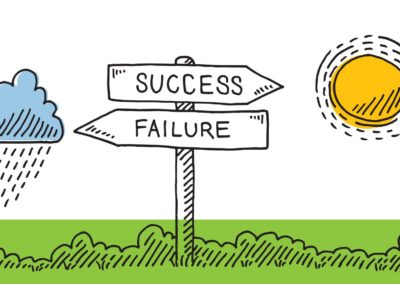How do businesses become great by choice? Well, that’s a question for James Collins.

Since penning his first book while teaching at the Stanford University School of Business, one question has dominated James Collins’ authorial career: How do companies thrive? With rigorous research and a healthy amount of skepticism for traditional wisdom, Collins has pursued this age-old question for decades. His seminal work “Good to Great” shook the business world in 2001.
Changing Times
 But after his book’s release, the world shook Collins right back. Shortly after the completion of what was to be his magnum opus came the destabilizing events of the early 2000s. As Collins himself puts it, “America awoke from its false sense of stability, safety, and wealth entitlement.” Witnessing government deficits, a crashing bull market, and a global war on terrorism, Collins and his team began to ask a new question: How do some companies thrive despite chaos? After nine painstaking years of research, he’s published the answer.
But after his book’s release, the world shook Collins right back. Shortly after the completion of what was to be his magnum opus came the destabilizing events of the early 2000s. As Collins himself puts it, “America awoke from its false sense of stability, safety, and wealth entitlement.” Witnessing government deficits, a crashing bull market, and a global war on terrorism, Collins and his team began to ask a new question: How do some companies thrive despite chaos? After nine painstaking years of research, he’s published the answer.
Measuring Success in Chaos
 “Great by Choice: Uncertainty, Chaos, and Luck — Why Some Thrive Despite Them All” is Collins at his absolute best. Methodical in approach and compelling in delivery, this New York Times best-seller examines companies that rose ahead of their competitors despite facing challenges beyond their control. Collins refers to these stalwart companies as “10Xers,” because each of the companies has a stock market value that is at least 10 times their industry average. And yes, every 10Xer overcame a significant amount of chaos and vulnerability. That is exactly what made them great by choice.
“Great by Choice: Uncertainty, Chaos, and Luck — Why Some Thrive Despite Them All” is Collins at his absolute best. Methodical in approach and compelling in delivery, this New York Times best-seller examines companies that rose ahead of their competitors despite facing challenges beyond their control. Collins refers to these stalwart companies as “10Xers,” because each of the companies has a stock market value that is at least 10 times their industry average. And yes, every 10Xer overcame a significant amount of chaos and vulnerability. That is exactly what made them great by choice.
With clearly defined parameters, “Great By Choice” breaks down nearly a decade of research into grounded claims go against many traditional beliefs in the business community. One concept the book hammers home is the mentality of the “20-mile march,” which draws on the historic journey to the South Pole led by Roald Amundsen in 1911.
20 Sunny Miles
 Amundsen’s trek had its fair share of blizzards, but he held his men to 15 miles per day. But the fact that this explorer pushed his men to success through substandard conditions is only half of Collins’ point. You see, Amundsen’s approach also applied to fair weather, stopping his men after 15 miles despite conditions that would allow them to go much farther.
Amundsen’s trek had its fair share of blizzards, but he held his men to 15 miles per day. But the fact that this explorer pushed his men to success through substandard conditions is only half of Collins’ point. You see, Amundsen’s approach also applied to fair weather, stopping his men after 15 miles despite conditions that would allow them to go much farther.
It’s this restraint that characterizes the true character of a 10X leader, according to Collins. It isn’t enough to push your company toward success when the market is bad. You also have to take care not to outgrow your resources when the economy is remarkably good. Companies that don’t show restraint in the face of luck can quickly find themselves out in the cold.






